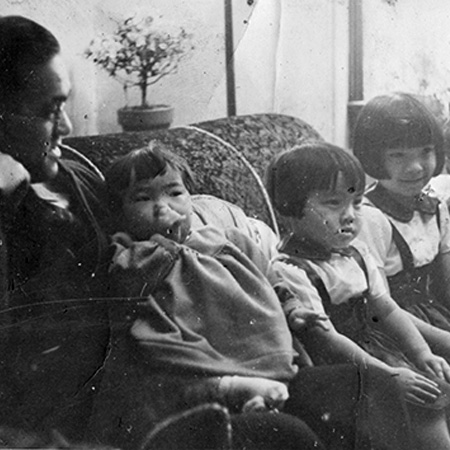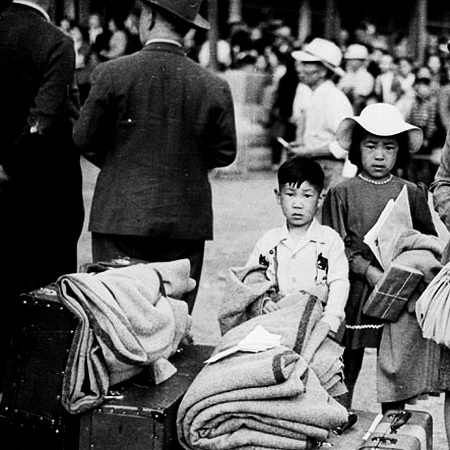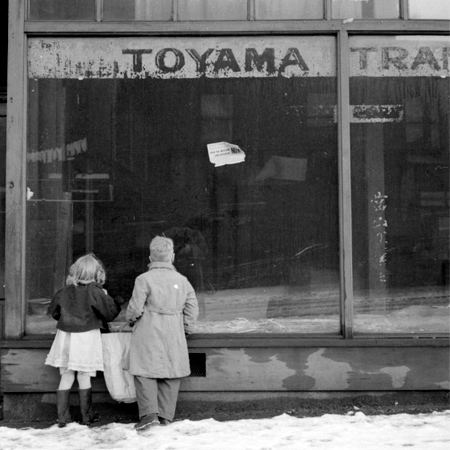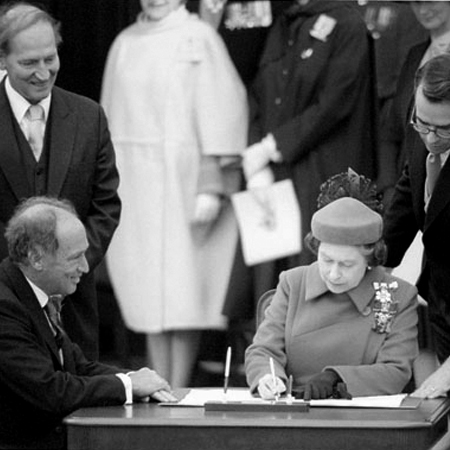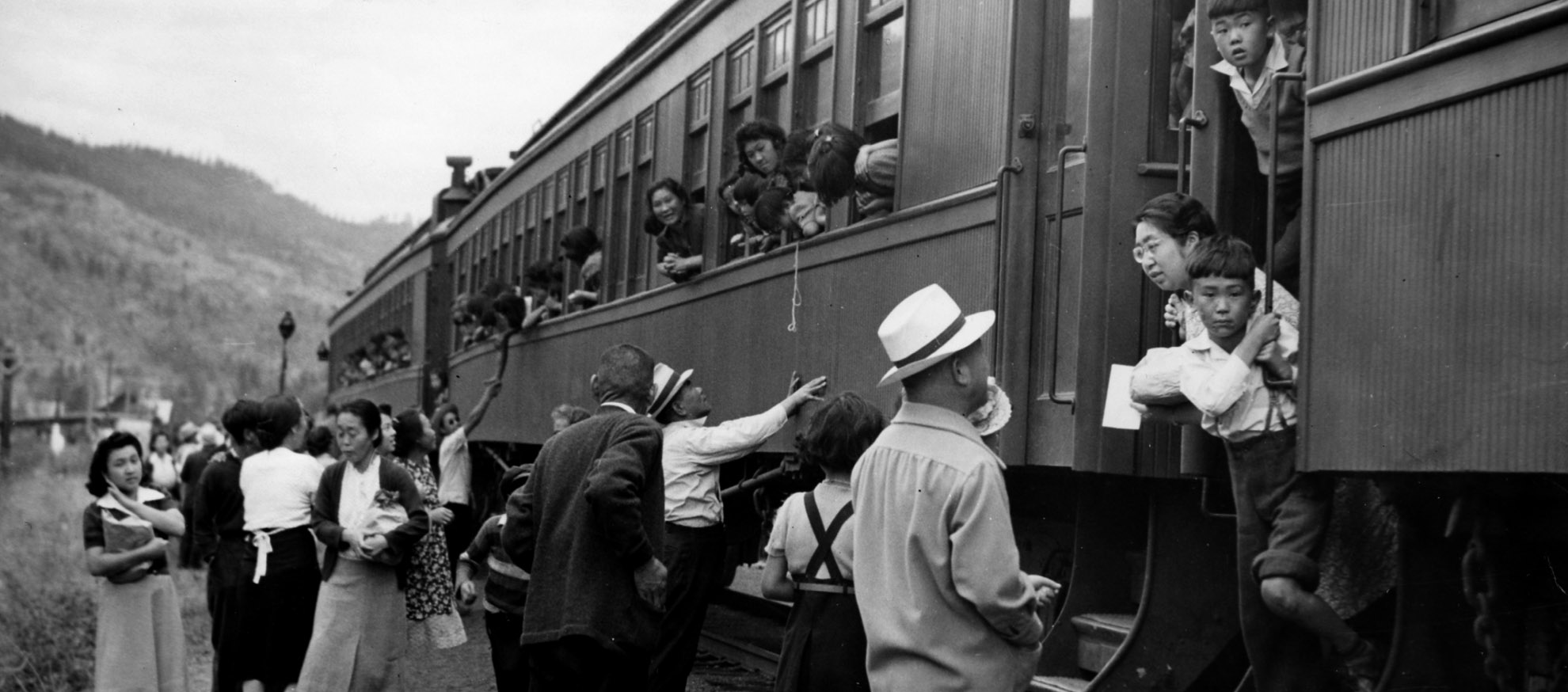
Lesson 3:Introduction to Internment
JAPANESE CANADIAN HISTORY 1942 - 1949
Students analyze photographs to gain knowledge about the Japanese Canadian experience by viewing these photographs.
JAPANESE CANADIAN HISTORY 1942 - 1949
Note:The purpose of this section is to provide some historical context to internment, and teachers can also read this section to students to give them the sequence of events as internment unfolded.
Into Internment
When Japan bombed Pearl Harbor, in Hawaii on December 7, 1941, Canada declared war on Japan. This declaration of war resulted in the following events in Canada:
- fishing boats owned by Japanese Canadian fishermen were taken away leaving them with no means of making a living
- Japanese language newspapers and schools were closed making communication very difficult for some families
- insurance policies were cancelled which meant there was no protection against theft, fire, or other disasters
In February 1942, under the War Measures Act, the Canadian government ordered all persons of the Japanese race to leave the west coast of British Columbia and gave the Royal Canadian Mounted Police the power to:
- search homes without a warrant
- deny certain people the right to a trial before judging their guilt or innocence
- enforce a curfew - Japanese Canadians had to stay in their homes from dusk to dawn
- confiscate or take away their cameras, radios, cars and firearms
It did not matter how long people had been living in Canad1. Of the 22,000 men, women and children, 75% were naturalized or Canadian-born citizens, but still had to leave behind their homes, farms, businesses, possessions and personal belongings. They could take only two pieces of luggage and were forced to move l00 miles (162km) inland from the coast.
Persons of Japanese ancestry were labeled "enemy aliens" and dangerous to the country because of their race. Families were separated. Men were sent to road camps in Ontario and on the BC/Alberta border. Many were given as little as twenty-four hours to vacate their homes.
Those from the coastal towns and on Vancouver Island were herded into Hastings Park on the Pacific National Exhibition grounds in Vancouver before being shipped away to internment camps. Women and children were separated and forced to live in the Livestock Buildings in stalls where horses and other animals were housed just days before. There was no privacy. Food was poor.
People did not know how long they would be confined, nor where they were being sent. Many did not know what had become of their husbands, families and relatives.
Meanwhile, internment camps were being readied in ghost towns such as Greenwood, Sandon, New Denver and Slocan City where internees were crowded into abandoned buildings. Those sent to centres such as Tashme, Rosebery, Lemon Creek, Popoff, and Bay Farm were housed in hastily built wooden shacks. While waiting for their completion, many spent their first winter in tents. To stay together, some families agreed to work on the sugar beet farms in Alberta and Manitoba where there were labour shortages. Anyone who did not obey the relocation orders were rounded up by the RCMP and sent to prisoner-of-war camps in Angler or Petawawa, Ontario.
"National security" was the reason given for the internment but both the RCMP and army intelligence found no evidence to support these drastic measures.
- “No fear of sabotage need to be expected from the Japanese inCanad1.”
RCMP Assistant Commissioner Frederich J. Mead’s report to Commissioner S.T. Wood, 1940.
- “From the army point of view, I cannot see that Japanese Canadians constitute the slightest menace to national security.”
Major General Ken Stuart’s report to Lieutenant General Maurice 1. Pope. Politics of Racism, pp. 23-24.
Furthermore, Canada was also at war with Italy and Germany. Italian and German Canadians did not have their property taken nor were they interned in such large numbers.
Dispossession
(Note:Do not read this next section to the students at this point, to preserve the "surprise" they will receive when their virtual possessions are taken from them.)
While Japanese Canadians were away in internment camps, the Government of Canada sold their property and possessions without asking their permission. The government had promised they would keep everything safely for them but everything was sold. Japanese Canadians received very little money for their businesses, houses, properties, and personal effects including furniture, sewing machines, pianos, valuable heirlooms, dishes, silver and clothes. Now they had no homes, money or property and faced an unknown future.
War Ends, but Japanese Canadians still not allowed to return home.
World War II was almost over in the spring of 1945 when the Government of Canada once again issued an order. All Japanese must "repatriate" to Japan or move east of the Rockies. This was in fact a deportation and exile order since 75% were Canadian-born and had never seen Japan. When the government tried to enforce this order, public outcry and a United Nations declaration that such actions were war crimes put an end to it. However, 4,000 Japanese Canadians, half of them Canadian born, had already been exiled to Japan. They arrived in a war torn Japan where they were again treated as aliens.
Restrictions were finally lifted in 1949
The injustices carried out on Japanese Canadians were based on racism. Those injustices by the Government of Canada lasted until four years after the end of the war, until April 1, 1949 when all official restrictions were lifted. However the racism against those of Japanese ancestry continued for many years.
